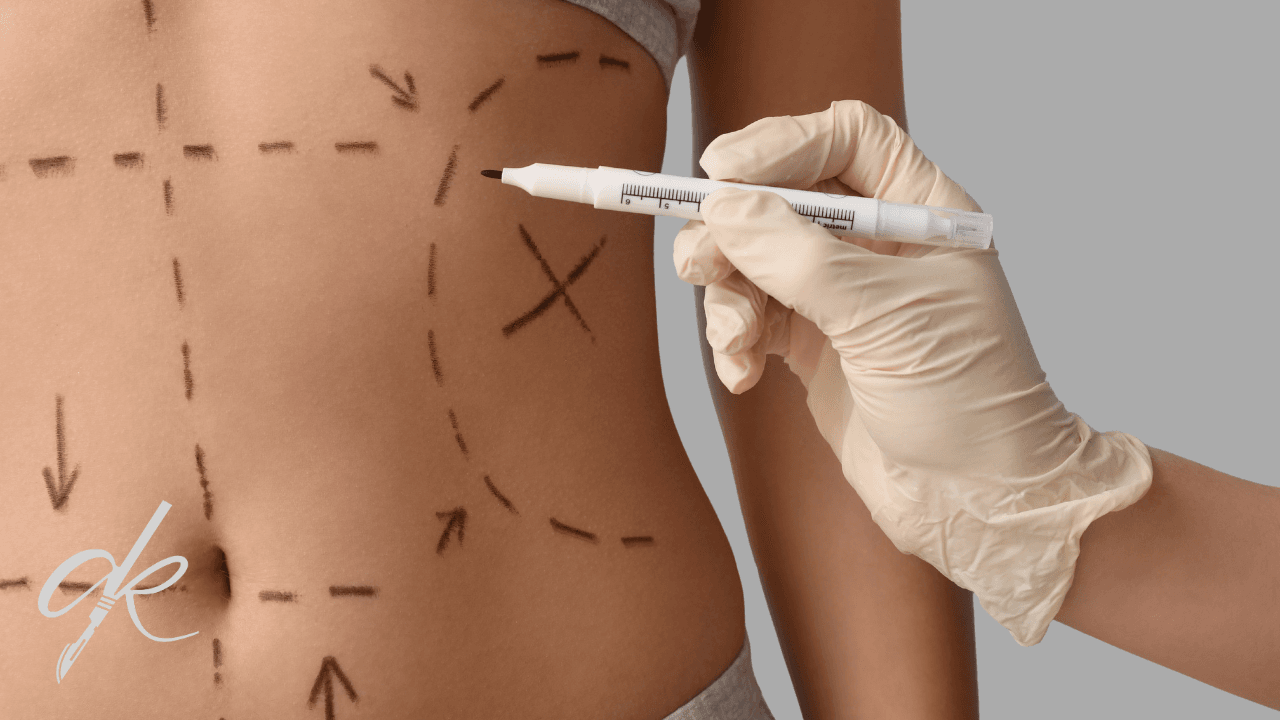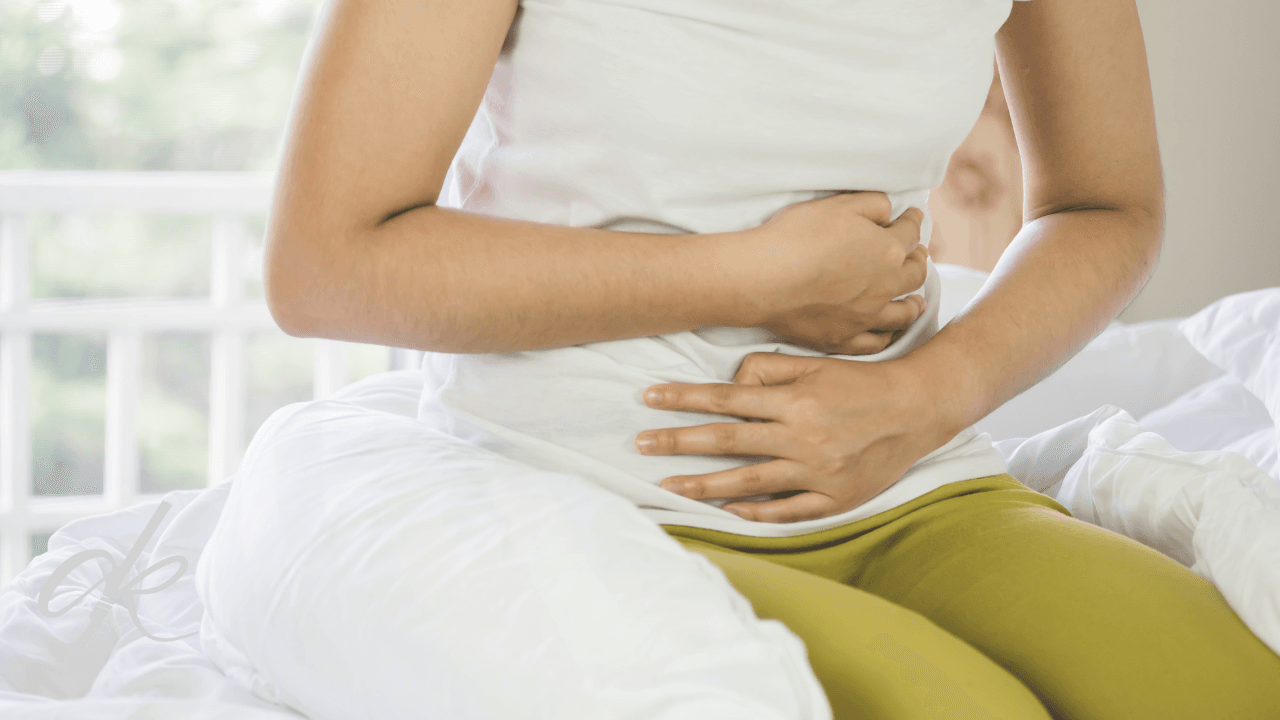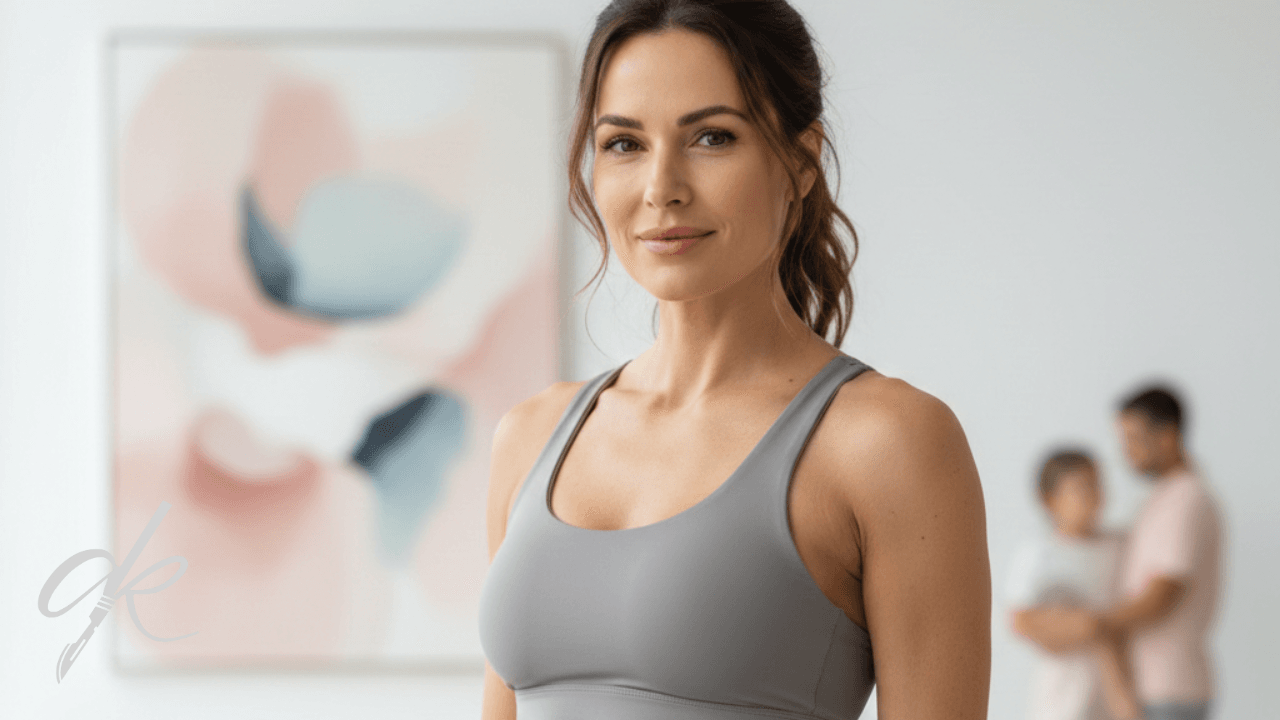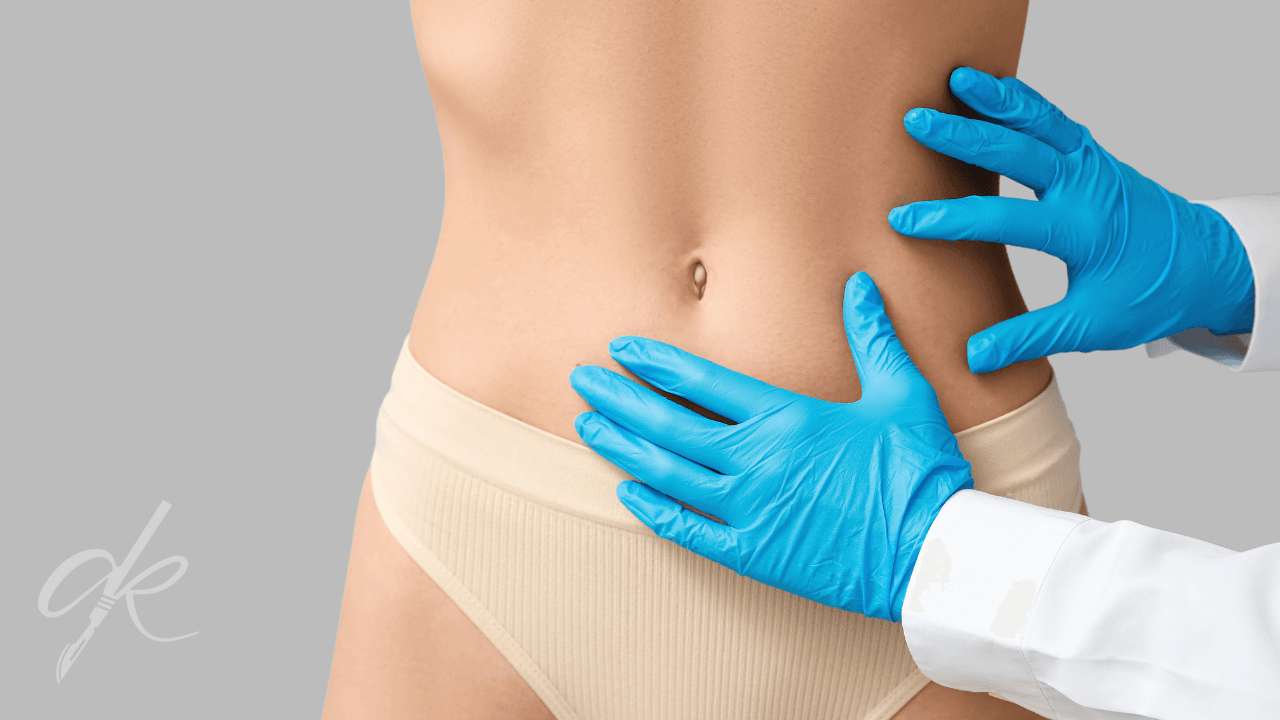Post-Abdominoplasty Pain Management: A Comprehensive Guide from Dr. Ahmet Kaplan
Hello Dear Readers, I’m Dr. Ahmet Kaplan
As a Plastic, Reconstructive, and Aesthetic Surgery specialist with many years of experience, one of the most frequent questions I receive from my patients is, “How long does pain last after a tummy tuck?” This question is a natural and completely valid concern for anyone considering aesthetic surgery. While undergoing an operation promises beautiful results, it also involves a recovery period and, naturally, some degree of pain. That’s why, in this article, I will delve into the post-abdominoplasty pain process in detail, explaining what you can expect during your recovery, with complete sincerity. Are you ready? Then take a deep breath and listen to this detailed information that will guide you on your healing journey. All procedures mentioned are performed by me, Dr. Ahmet Kaplan, here in Istanbul, Turkey.
Is Pain Normal After a Tummy Tuck? My Answer Is Clear: Yes, Absolutely!
First and foremost, I want to state very clearly: pain after abdominoplasty is completely normal and an expected part of the process. This surgery is not a simple procedure; it’s a comprehensive surgical intervention where we make significant changes to the abdominal area. During the operation, excess skin and stubborn fat tissue are removed, abdominal muscles are tightened, and often weakened or separated abdominal muscles (rectus diastasis) are repaired. All these manipulations naturally trigger a healing response in your body. Part of this response includes pain, tenderness, tightness, and discomfort.
Consider this: your abdominal muscles may have become lax and separated over the years due to stretching (e.g., pregnancies or weight fluctuations). When we bring these muscles together and tighten them, we are essentially manipulating muscle tissue with internal sutures. Since the skin and fat tissue are also stretched and reshaped, nerve endings and tissues try to adapt to this new state. This adaptation process, of course, occurs with some pain. The important thing is to effectively manage the intensity and duration of this pain and to distinguish between normal and unusual situations.
How Long Does Pain Last After Abdominoplasty? A Detailed Timeline of Recovery
While the intensity and duration of pain vary from person to person, generally, the post-abdominoplasty pain process follows specific stages. Let’s examine these stages one by one:
1. The First 72 Hours: The Most Intense Pain – “The Initial Storm”
The first 3 days, or 72 hours, after surgery are when the most intense pain is typically felt. During this period, your body is in shock from the surgery and sends the strongest pain signals.
- The Power of Painkillers: During this period, the painkillers prescribed by your doctor are vitally important. Thanks to modern anesthesia techniques and strong pain management protocols, this pain usually does not reach unbearable levels. We typically use both oral and, in some cases, intravenous painkillers. With a multimodal pain management approach, which involves a combination of various drugs that work through different mechanisms, pain is controlled. This allows you to remain relatively comfortable even during these first few days when pain peaks.
- Restricted Movement: In the first few days, your movements will be quite restricted. Turning in bed, sitting up, or getting out of bed can be challenging. You might feel the need to walk bent forward due to the tension in your abdominal area and the sutures. This is a natural reaction to reduce abdominal tension. Do not push yourself, and make every movement gently.
- Swelling and Bruising: In addition to pain, significant swelling and bruising in your abdominal area are typical features of this period. This occurs due to tissue trauma and bleeding related to surgery and is completely normal. Swelling usually reaches its peak within the first 48-72 hours.
2. The First Week: Pain Begins to Subside – “Winds of Relief”
From the 4th day onwards, the intensity of pain begins to decrease significantly. Your body has overcome the initial shock, and healing mechanisms are more active.
- Stinging and Burning Sensation: Although the pain decreases, you might experience stinging, pulling, or burning sensations in your abdominal area when coughing, sneezing, laughing, or making sudden movements. These sensations arise from the stretching of internal sutures or the healing process of nerve endings. Try to avoid such movements as much as possible or support your abdomen with your hand to reduce tension.
- The Role of the Support Garment: During this period, the support garment (compression garment) recommended by your doctor plays a crucial role in alleviating pain. The garment applies constant pressure to the abdominal area, reducing swelling, supporting the suture lines, and aiding in the healing of the abdominal muscles. It also minimizes tension in the abdominal area during movement, thereby increasing your comfort. Wearing your garment regularly and as instructed significantly contributes to faster healing and reduced pain.
- Increased Mobility: Compared to the first few days, you’ll start to move more comfortably. You can take short walks and attend to basic needs like using the restroom more easily. However, you should still avoid standing for long periods or bending over frequently.
3. Weeks 2-4: Lingering Mild Discomfort and Tightness – “Towards Calm Waters”
During this period, sharp pain typically gives way to a mild ache, tightness, or pulling sensation. You’ll make significant progress in returning to your daily activities.
- Numbness and Tingling: It’s very common to experience numbness, tingling, or loss of sensation along the incision lines and in the abdominal skin. This is part of the healing process of severed nerve endings during surgery. Over time, these sensations return for most patients, but it can take several months or even a year to fully normalize. In some cases, a slight permanent numbness may remain.
- Itching Sensation: You might feel itching along the incision lines due to healing tissues and regenerating nerve endings. This is a positive sign of healing, but it’s important to avoid scratching. Moisturizers or antihistamines recommended by your doctor can help alleviate this discomfort.
- Return to Daily Routine: In these weeks, you can start to return to work or your daily routine, but you should still avoid heavy physical activities and overly strenuous tasks. If you have a desk job, you might be able to return to work after a few weeks. However, if your job is more physically active, this period might be longer. Listening to your body’s signals and not pushing yourself is essential.
4. 1-3 Months and Beyond: Full Recovery and Comfort – “Approaching the Goal”
After 6 weeks, most patients no longer experience significant pain. This period is when healing is largely complete, and the results begin to become more apparent.
- Decreased Swelling and Firmness: Swelling and firmness in the abdominal area continue to subside over time. It can take 6 months to 1 year for them to fully resolve and for the final result to emerge. You might notice less swelling in the mornings, but an increase after standing or physical activity during the day. This is normal and related to your body’s fluid retention and tissue healing dynamics.
- Return to Sports and Physical Activity: Most surgeons allow light walking from the 2nd week, but for strenuous sports like running, weightlifting, and abdominal exercises, a waiting period of at least 6-8 weeks, or even 3 months in some cases, is recommended. Especially if abdominal muscle repair was performed, this waiting period is critical for the muscles to fully fuse and strengthen. You must get approval from your doctor before starting any sports. Sudden and strenuous movements can harm healing tissues.
- Enjoying the Results: During this period, you’ll start to fully appreciate the aesthetic results of the surgery, such as a flattened abdomen and a more defined waistline. Your clothes will fit better, and your self-confidence will increase.
Dr. Kaplan’s Golden Tips for Reducing Post-Abdominoplasty Pain
There are some very important strategies you can implement to minimize pain after surgery and accelerate your healing process. Remember, your greatest helper in this process is to strictly follow the instructions given by your doctor and their team.
- Use Your Prescribed Painkillers Regularly: Take your painkillers regularly at the times specified by your doctor, not just “as needed.” Taking them before the pain starts helps prevent it from intensifying and ensures a more comfortable recovery. Waiting for the pain to peak can make it harder to control. Also, discuss any side effects of painkillers (stomach upset, constipation, etc.) with your doctor and take additional precautions if necessary.
- Rest Plenty, Avoid Heavy Lifting: Your body needs energy to heal. Prioritize rest as much as possible in the first few weeks after surgery. You can keep your mind busy with activities like your phone, tablet, or TV, but do not physically exert yourself. Especially for the first 4-6 weeks, avoid lifting anything heavier than 5 kg. Don’t hesitate to ask family or friends for help with household chores or childcare.
- Wear Your Support Garment Without Fail: As I mentioned before, the compression garment is essential for the healing process. It reduces swelling, supports the suture lines and abdominal muscles, alleviates pain, and helps the skin adapt to its new contour. It’s important to wear your garment continuously, except when instructed to remove it, for the duration recommended by your doctor (typically 4-6 weeks).
- Increase Blood Circulation with Light Walks: Immobility after surgery can increase the risk of blood clot formation. Therefore, with your doctor’s permission, start taking short, light walks from the first day after surgery. These slow-paced walks around your home or garden will speed up blood circulation, help reduce swelling, and improve your general well-being. However, do not overexert yourself.
- Eat a Balanced Diet and Drink Plenty of Water: Your body needs the right nutrients for the healing process. Consuming protein-rich foods, and those packed with vitamins and minerals, accelerates tissue repair. Preventing constipation with fibrous foods is also important, as straining during constipation can cause pain in the abdominal area. Drinking plenty of water helps your body flush out toxins and reduces swelling. Limiting caffeine and salt intake will also be beneficial, as they can increase swelling.
- Avoid Smoking and Alcohol: Smoking constricts blood vessels, reducing oxygen flow to tissues and significantly slowing down healing. It also increases the risk of infection. Alcohol can also negatively affect the healing process and increase bruising due to its blood-thinning effects. You should absolutely abstain from smoking and alcohol for at least a few weeks before and after surgery.
- Pay Attention to Wound Care: Follow your doctor’s instructions meticulously for wound care to prevent infection at the incision sites. Paying attention to cleanliness, regularly changing bandages, and keeping the wound dry promotes healing and prevents complications that could cause pain.
- Manage Stress: Stress can increase pain perception and slow down the healing process. Try to reduce stress through relaxing activities, light meditation, or listening to your favorite music. Remember, this is a temporary process, and you will eventually achieve the desired result.
- Maintain Communication with Your Doctor: If you experience any doubt, concern, or unusual symptom during your recovery, contact your doctor immediately. Early intervention is the best way to prevent potential complications.
Frequently Asked Questions (FAQs): Other Answers on Your Mind
I’d also like to answer some of the most common questions about post-abdominoplasty pain and recovery here:
1. Will the pain after a tummy tuck be unbearable?
No, it definitely won’t be unbearable. Thanks to modern pain management protocols and anesthesia techniques available today, post-operative pain can be largely controlled. Your doctor will prepare a personalized pain management plan for you and prescribe appropriate medications. When you take these medications regularly, the pain level usually remains manageable. Most of our patients describe the pain as “uncomfortable” or a “feeling of tightness,” rarely describing it as “unbearable.”
2. How long should painkillers be used?
Generally, painkillers are needed intensively for the first 3-5 days. During this period, they are taken at regular intervals. In the following weeks, as the pain intensity decreases, painkiller use can be reduced or completely stopped as needed. Some patients may continue with mild painkillers for a few weeks, while others might stop completely within a week. Your doctor will determine the duration of use based on your healing rate and pain threshold.
3. What other complaints are normal besides pain?
Besides pain, normal complaints you might encounter after abdominoplasty include:
- Swelling (Edema): Significant swelling in the surgical area is very common, especially in the first few weeks. This occurs due to tissue trauma and fluid accumulation and subsides on its own over time. It can take several months to fully resolve.
- Bruising: Bruising can occur in the abdominal area due to surgical intervention. These bruises also change color over time (from blue-black to green-yellow) and disappear.
- Numbness and Tightness: Numbness, loss of sensation, tingling, or a feeling of tightness in the abdominal skin and along the incision lines are common. This is part of the healing process of nerve endings.
- Fluid Accumulation (Seroma): Although rare, a collection of clear fluid (seroma) can occur in the surgical area. This condition is usually controlled with drains or can be simply drained by your doctor with a needle.
- Itching: You might feel itching along the incision lines due to healing tissues and regenerating nerve endings.
- Fatigue: Your body expends a lot of energy to heal, so you might feel tired for a few weeks after surgery. Plenty of rest is important.
4. When should I be concerned if the pain doesn’t go away or increases?
If your post-operative pain progressively increases, becomes unbearable, or if the pain is accompanied by any of the following symptoms, you should contact your doctor immediately:
- High Fever: A fever of 38°C (100.4°F) or higher can be a sign of infection.
- Redness and Increased Warmth at the Surgical Site: Another sign of infection.
- Foul-Smelling Discharge from the Surgical Incision: May indicate infection or a wound healing problem.
- Severe Nausea and Vomiting: Could indicate dehydration or medication side effects.
- Shortness of Breath or Chest Pain: Could be a symptom of a serious complication (e.g., pulmonary embolism) and requires immediate medical attention.
- Unilateral Leg Swelling or Pain: Could be a sign of deep vein thrombosis (blood clot).
If you experience any of these symptoms, do not panic, but contact your doctor without delay. This is of vital importance.
5. When can I exercise after abdominoplasty?
The return to physical activity should be gradual:
- Light walking: Usually can begin from the first day after surgery, at a slow pace and for short distances.
- Moderate intensity activities: In weeks 2-4, with your doctor’s permission, you can transition to lighter cardio exercises like brisk walking.
- Strenuous sports and abdominal exercises: For activities like running, weightlifting, and exercises that strain the abdominal muscles (crunches, planks, etc.), at least 6-8 weeks, or even 3 months if abdominal muscle repair was performed, should be waited. This is necessary for the abdominal muscles and tissues to fully heal and strengthen. You should always get clear approval from your doctor before starting any exercise.
A Comfortable Recovery Process is in Your Hands!
Dear patients, as you can see, pain after abdominoplasty is a temporary condition that can be easily controlled with the right approach. By meticulously following all the recommendations your doctor provides before and after surgery, you will not only feel less pain but also experience a much more comfortable and faster recovery process.
Remember, you are not alone in this journey. You can always stay in touch with me and my team, and ask any questions that come to mind. A tummy tuck is a transformative experience for most people, enhancing their quality of life, rejuvenating self-confidence, and offering a new beginning. The wonderful results you’ll achieve after a short recovery period will be well worth all the effort.
Stay healthy and beautiful!
Dr. Ahmet Kaplan Plastic, Reconstructive, and Aesthetic Surgery Specialist Based in Istanbul, Turkey





